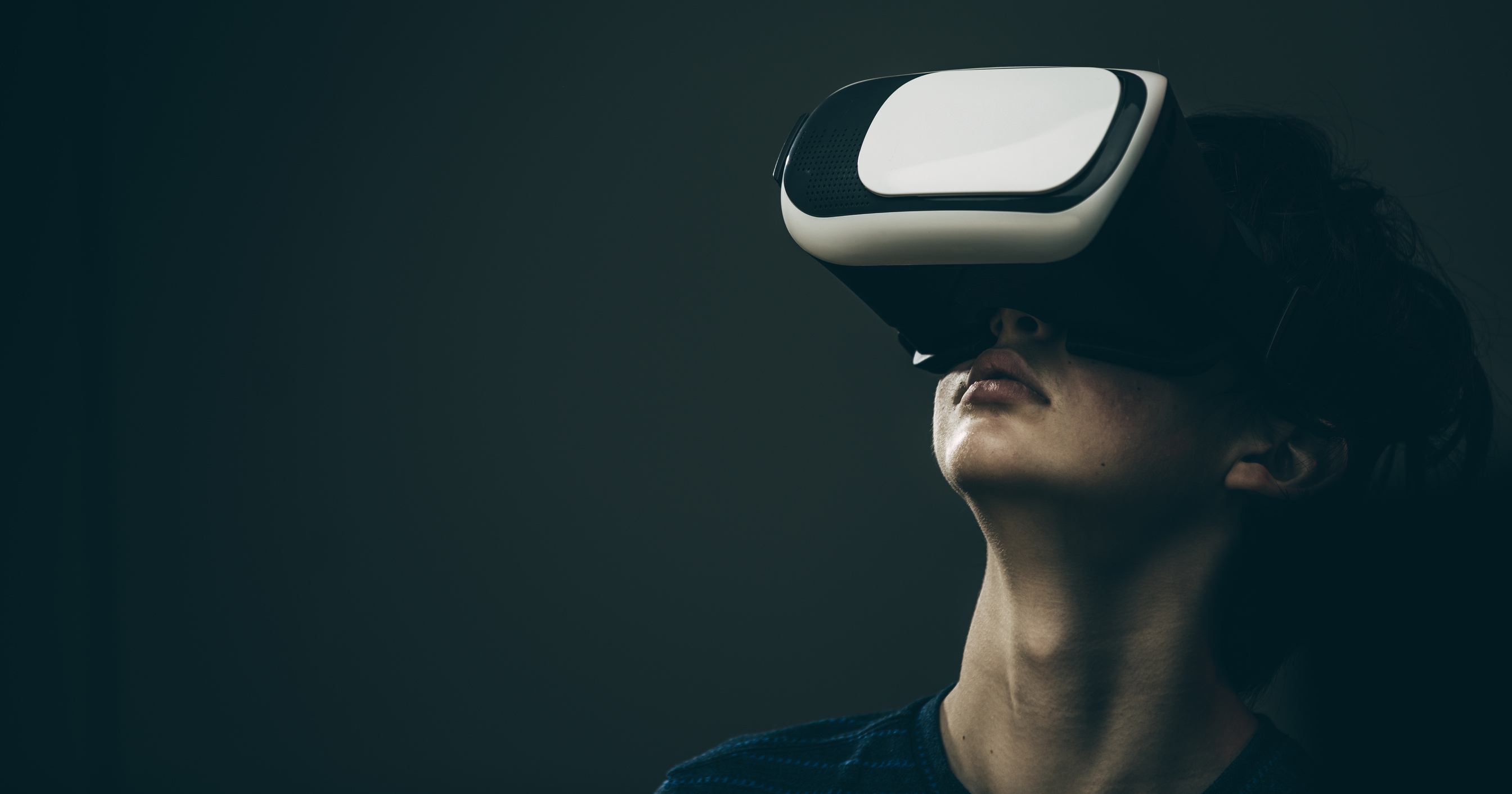
Extended Reality (XR)
And Librarianship

Extended Reality (XR) encompasses both virtual and augmented reality software into a single technology. This website hopes to explain the two software and their relationship so far with librarianship.

Virtual
Reality
The use of computer modelling and simulation, or "virtual reality," allows a person to engage with a manufactured three-dimensional visual or other sensory world. Through the use of interactive, wearable devices that send and receive information and can take the shape of goggles, headsets, gloves, or body suits, VR applications immerse the user in a computer-generated environment that resembles reality.

Augmented Reality
Using digital visual components, sound, or other sensory cues, augmented reality (AR) creates an enhanced version of the real world that is transmitted through technology. In AR, sensory data is superimposed over the physical world to improve the user's experience. In contrast to virtual reality, which constructs its own online environment, augmented reality enhances the real world.



AcAdemic Libraries



Examples
Western Michigan University has a Virtual Reality Lab that offers technologies such as Oculus VR headsets or workstations to engage with existing content and software that allows users to develop their own.
The San José Public Library also offers Oculus VR opportunities for patrons, however, as a public library they are focused on entertainment value rather than providing development opportunities.
At the Georgetown University Library, they have similar opportunities to Western Michigan University Library. Georgetown also has two 360° cameras that allow library users to create content, and allows patrons to schedule sessions with multimedia specialists to learn more about the various software the library offers.
Common XR Tech
OCULUS VR
GOOGLE CARDBOARD
VIVE


Pros & Cons
There are definite benefits to including Extended Reality (XR) within public, academic, and research libraries. They support learning in libraries for use in areas such as academic course work or providing information on new technologies for youth. XR is also a means of connection as users can find companionship through its use. New sensations and experiences are also achievable through the use of these technologies. They also provide safe practice/simulations training for risk intensive professions like surgery, flight, combat, and many others. Introducing XR into libraries also promotes them as forward-thinking institutions that embrace advancements in technology. On top of this, libraries can also positions themselves as potential partners for change and development in XR software/hardware/ Overall, XR provides users with a unique experience and libraries with a great opportunity.
Supports learning
Promotes connections
Safe practice
simulations

Policy constraints
Requires constant
monitoring
Not budget friendly
While there are positives to using XR technology, there are still cons to factor in when introducing them to libraries. Most public and even academic libraries do not have the budget for XR technology which can be high in cost upfront and for maintenance. There are also issues of employee training/hiring to assist patrons when using the tech. On top of budget issues, this technology must also conform to existing library policies or else time-consuming rewrites will need to be made. Use of XR tech will also require proper monitoring to ensure users particularly in public libraries do not form an addiction especially since it is still experimental. At the end of the day XR tech is not reality, and some caution must be taken when moving forward.

Opinions on VR/AR Use in Libraries
There are many opinions on whether XR technology belongs in library spaces. On one hand, the positive expresses XR as a unique opportunity for libraries. In a study of perception and experiences of virtual reality in public libraries, most interviewees saw XR as a welcome experience and, “expressed amazement related to the sense of presence experience through the immersive and interactive qualities of VR” (Dahya, N., et al. 2021, p.628). Respondents found that, “VR could also help individuals overcome constraints related to time, money, geography, and the body beyond the experiences they had” (Dahya, N., et al. 2021, p.628). Overall, the technology itself has positive connotations to providing new experiences to patrons.
While XR can be seen in a positive light, there are also important concerns related to the ethics of including this technology in library spaces. Libraries have a long-held reputation of being scholarly places rather than places of entertainment. Library boards must factor in stakeholder opinions when introducing new technologies. In a separate study discussing VR in libraries, Ellern & Cruz state, "on one hand, the availability of games brought students to the library and engaged them with the new technology. On the other hand, the provision of games constitutes, for some stakeholders, a potentially significant shift away from an academic or scholarly mission for the library (2021, p.7).

On top of stakeholder concerns on the perception of library spaces, there are also issues with how these technologies can impact whether patrons feel safe accessing the library. There are numerous titles for XR tech that include violent actions that may make some patrons uncomfortable. Particularly in areas where gun violence is high including these types of titles, “when engagement may also include actions, such as shooting, that may be especially sensitive for college campuses” (Ellern, G. D., & Cruz, L. 2021, p7). There are several reasons why it would be important for libraries to analyze their communities before committing to an emerging technology like XR to ensure that they are implementing it for the right reasons.
There are clear reasons for and against introducing XR into library spaces, but it all boils down to individual institutions. It is important to also recognize that pushback will occur for nearly every new technology the library chooses to introduce because there a plenty of diverging opinions on whether it is a good idea. Whether it be budget issues, ethically charged debates, or simply patrons against change, there are numerous reasons why libraries shouldn’t provide technologies like XR. In the end, not everyone a library serves will be on board, but if the majority of the population can benefit from its introduction, then why not include XR spaces in libraries?
Ethics
Supportive
Experience
Violence
Academic
Budget


By 2025 the market for XR content could be
$5.4 billion, and hardware could be worth
$62 billion.
More accurate motion sensors and better resolutions, will reduce processing delays
Increased familiarity with immersive video
will promote future content of XR
Real-world socialization to experience
XR technology together
the
future
of xr


References
Abram, S. (2019). Augmented Reality in libraries: Technology trends that aren’t out there anymore! Lucidea. https://lucidea.com/blog/augmented-reality-in-libraries-technology-trends-that-arent-out-there-anymore/
Dahya, N., King, W. E., Lee, K. J., & Lee, J. H. (2021). Perceptions and experiences of virtual reality in public libraries. Journal of Documentation, 77(3), 617–637. https://doi.org/10.1108/JD-04-2020-0051
Ellern, G. D., & Cruz, L. (2021). Black, White, and Grey: The Wicked Problem of Virtual Reality in Libraries. Information Technology and Libraries, 40(4), NA. https://link.gale.com/apps/doc/A690284889/AONE?u=lond95336&sid=bookmark-AONE&xid=a24a472a
Frost, M., Goates, M., Cheng, S., & Johnston, J. (2020). Virtual Reality: A Survey of Use at an Academic Library. Information Technology and Libraries, 39(1), NA. https://link.gale.com/apps/doc/A654984162/AONE?u=lond95336&sid=bookmark-AONE&xid=36ba83ea
Lee, K. J., King, W. E., Dahya, N., Lee, J. H. (2020). Librarian perspectives on the role of virtual reality in public libraries. In Proceedings of the Association for Information Science and Technology. ASIST. https://doi.org/10.1002/pra2.254
Santos, J.F. & Esposo-Betan, S. M. (2017). Advantages and challenges of using Augmented Reality for library orientations in an academic/research library setting. Purdue University. https://docs.lib.purdue.edu/cgi/viewcontent.cgi?article=2199&context=iatul
Spina, C. (2014). Keeping up with Augmented Reality". American Library Association http://www.ala.org/acrl/publications/keeping_up_with/ar
Suen, R. L. T., Chiu, D. K. W., & Tang, J. K. T. (2020). Virtual reality services in academic libraries: deployment experience in Hong Kong. The Electronic Library, 38(4), 843–858. https://doi.org/10.1108/EL-05-2020-0116
Virtual Reality. (2017). American Library Association http://www.ala.org/tools/future/trends/virtualreality
